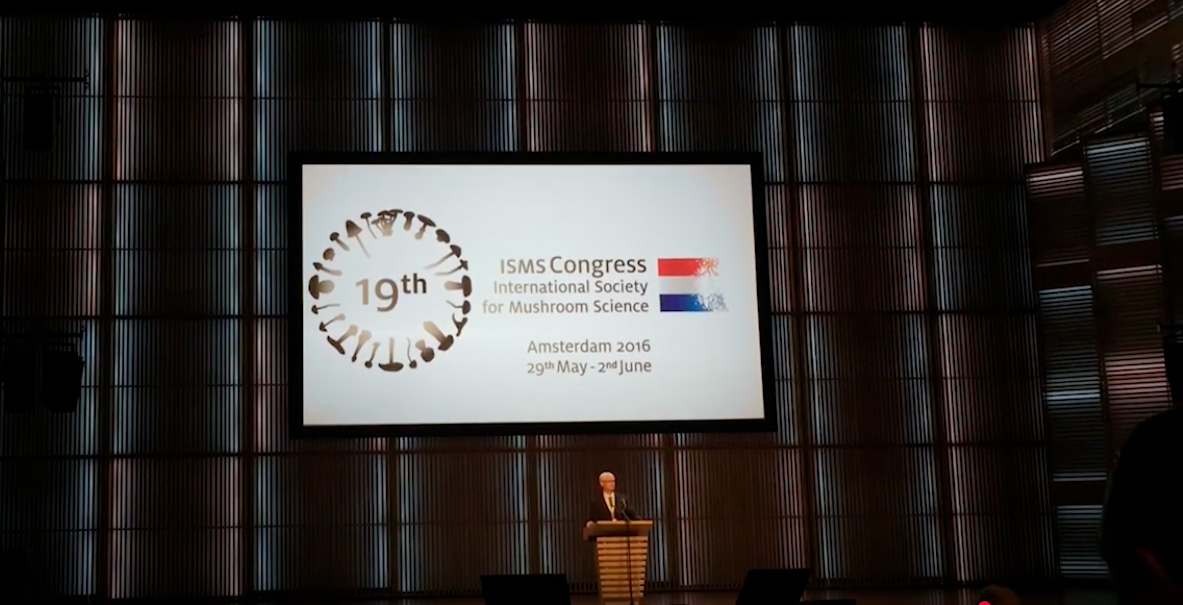On June 1st, 2016, Jeff presented his research that was published in Redefining Medicinal Mushrooms, which created a new testing protocol for qualifying functional mushroom products.
In one example, he highlights reishi to clearly demonstrate the differences in beta-glucans for whole reishi mushrooms and reishi mycelium grown on grain. The results were as follows:
[av_table purpose='tabular' pricing_table_design='avia_pricing_minimal' pricing_hidden_cells='' caption='Reishi Mushroom and Mycelium on Grain Test Results' responsive_styling='avia_responsive_table' av_uid='av-swlxps'] [av_row row_style='' av_uid='av-rqsg6o'][av_cell col_style='' av_uid='av-qbygk0'][/av_cell][av_cell col_style='' av_uid='av-npgyuo']Beta-glucans[/av_cell][av_cell col_style='' av_uid='av-mn95j4']Alpha-glucans[/av_cell][av_cell col_style='' av_uid='av-kavlog']Ergosterol[/av_cell][/av_row] [av_row row_style='' av_uid='av-j2vvsg'][av_cell col_style='' av_uid='av-h3ifsg']Reishi Mushroom[/av_cell][av_cell col_style='' av_uid='av-giyrpc']30.5%[/av_cell][av_cell col_style='' av_uid='av-dvthio']0.37%[/av_cell][av_cell col_style='' av_uid='av-c7ihnk']0.1%[/av_cell][/av_row] [av_row row_style='' av_uid='av-bgup6o'][av_cell col_style='' av_uid='av-8v5xfk']Reishi Mycelium on Grain[/av_cell][av_cell col_style='' av_uid='av-6ywd7k']6.56%[/av_cell][av_cell col_style='' av_uid='av-5hjhz4']40.77%[/av_cell][av_cell col_style='' av_uid='av-3y5ra8']0.01%[/av_cell][/av_row] [/av_table]
The testing results illustrate that residual grain from mycelium products increases alpha-glucans (starch) and lowers the beta-glucans and ergosterol. Ergosterol is the sterol that is a prime indicator of degree of fungal presence in any material. It is also the pre-cursor to vitamin D2.
Full Presentation
Presentation Slides
ISMS Published Paper
Follow Up Questions
At the end of Jeff’s presentation, there were 2 questions from Paul Stamets of Fungi Perfecti. This company sells mycelium on grain products.
1. Dr. McCleary's recent paper on the Megazyme Beta-glucan test method found almost 2x more beta-glucans in reishi mushroom than previous test findings. How can this test method be accurate with such a wide variance of test results?
Jeff responded that Dr. McCleary’s paper was a detailed evaluation of the Megazyme beta-glucan method as well as a review of beta-glucan methods published by other mushroom researchers - Manzi and Molleken specifically. Dr. McCleary clearly elucidated the reasons why the methods used by Manzi and Molleken were not accurate.
When he re-evaluated his own Megazyme test method, he discovered that sulfuric acid was a better solvent than HCl for the procedure. Although sulfuric acid had no effect on most of the mushroom samples, it had a dramatic effect on reishi, increasing the beta-glucan result. Because of this finding, Dr. McCleary now recommends using sulfuric acid when running the Megazyme method.
This finding demonstrates why scientists such as Dr. McCleary publish in peer-reviewed journals and report their findings for the betterment of science. So the answer to Mr. Stamets’ question is that the method has been improved and best of all, reishi is actually higher in beta-glucans than originally believed.
Dr. McCleary’s paper was published in the peer reviewed Journal of the Association of Official Analytical Chemists International, the body that validates analytical methods used in scientific research and industry. So the Megazyme method has now been peer reviewed.
2. How does the Megazyme method differentiate between mould mycelium and basidiomycete mycelium?
The Megazyme method is not designed to differentiate fungal species. Microbiological testing can accomplish this if the microbes are alive. In order to discover if other fungal species are present, Nammex sends the sample out for DNA analysis. This accurately determines what organisms are in the sample, so if mold or other plants are present, they will show up in the DNA analysis. Likewise, if a product is spiked by yeast, grain starches, or other adulterants, they will also show up.

